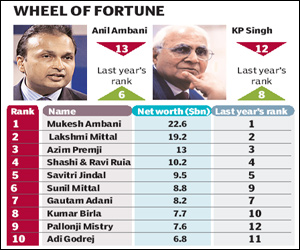Despite a slight easing of manufacturing inflation, India?s wholesale price index remained uncomfortably high at 9.72% in September versus a year earlier as raw food items, power and fuel turned costlier. With headline inflation perilously close to double digits, few expect the RBI to take a pause from its tightening cycle on October 25.
 A statement by deputy governor KC Chakrabarty gave further credence to the view that the RBI might go for another 25-bps hike, despite poor industrial output growth rate for July and August and evidence of a slowing of investments.
A statement by deputy governor KC Chakrabarty gave further credence to the view that the RBI might go for another 25-bps hike, despite poor industrial output growth rate for July and August and evidence of a slowing of investments.
?If inflation is as high as 9-10%, we need to do something,? he said on Friday, after the data was released. ?If inflation goes up, interest rates will go up anywhere in the world. I have no other instrument available with me (to anchor inflationary expectations),? Chakrabarty said, adding that it is difficult to say whether inflation has peaked yet.
It is another matter that the cycle, which saw a dozen rate hikes since March 2010, is already one of the longest in India and the RBI has arguably been the most aggressive among central banks in combating inflation.
Inflation was 8.98% in the same month a year ago and stood at 9.78% in August.
The Prime Minister’s Economic Advisory Council (PMEAC) also said the latest data does not call for a pause by the RBI. ?It is not a very comfortable situation. For the monetary policy stance to change, inflation has to come down and show signs of definite decline. But that kind of an indication has not come,? PMEAC chairman C Rangarajan told a news channel.
Kotak Mahindra Bank chief economist Indranil Pan, however, said that inflation has peaked and that the RBI should now take a pause before further tightening the monetary policy. Higher borrowing costs and weak demand have already led to the economy growing at its slowest pace in the first quarter at 7.7% and industrial output growth slump to 4.1% in August, he noted.
?Inflation in September is slightly lower than what was recorded in August, when it has peaked. Besides, overall prospects for the economy is slightly weaker now than what was evident earlier,? Pan said. Part of the September inflation is on account of costlier power and fuel, while items like jet fuel and minerals showed a downward trend.
Data released by the commerce and industry ministry on Friday revised June inflation upwards to 9.36% from the provisional estimate of 9.22%, indicating inflation is understated.
During September, prices of primary articles, which account for a fifth of WPI, edged up 11.84% mainly on account of costlier raw food items like poultry chicken, inland fish, fruits, vegetables and eggs, although tea and maize became less expensive. Prices of fuel and power, that account for 14.9% of WPI, moved up by 14.09% on account of costlier lubricants, electricity and petrol. Prices of manufactured products, which have a weight of 65% in WPI, went up 7.69% as sugar, edible oils and beverages became costlier.

